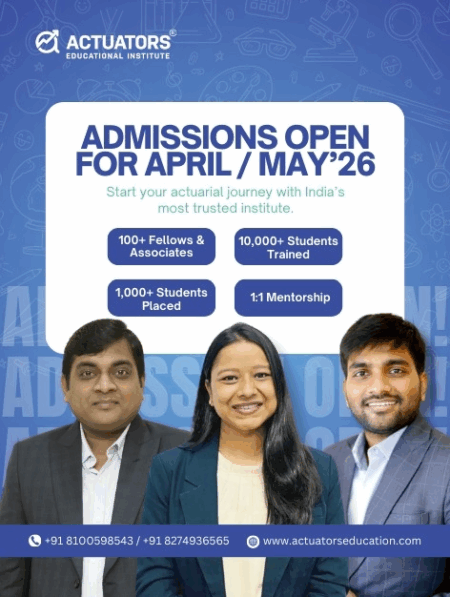Cracking the Code: A Rough Guide to SOA Papers
Becoming an actuary involves navigating through a series of exams that test your analytical, mathematical, and problem-solving abilities. If you’re considering pursuing the Society of Actuaries (SOA) pathway, understanding the structure of these papers is your first step toward success. Here’s a quick overview of the key exams and modules in the SOA’s journey.
Foundational Exams
The foundational exams cover the core mathematical concepts that form the basis of actuarial science. These include:
$\bullet \quad$ Exam P (Probability): Focused on probability concepts, this exam tests your ability to analyze and apply probability theories to solve problems. Expect plenty of dice rolls and coin flips—on paper, at least!
$\bullet \quad$ Exam FM (Financial Mathematics): This paper dives into interest theory, annuities, and financial instruments. It’s a must for understanding the time value of money and financial derivatives.
$\bullet \quad$ Exam SRM (Statistics for Risk Modeling): Covering statistical methods and regression analysis, this exam equips you with the tools to handle real-world data challenges.
$\bullet \quad$ Exam FAM (Fundamentals of Actuarial Modelling): This paper delves into the world of reinsurance and insurance products and teaches you how to price them and set aside reserves for the same.
Intermediate Exams
Once you’ve nailed the basics, it’s time to move on to the Fundamentals of Actuarial Practice (FAP) and advanced papers:
$\bullet \quad$ FAP Modules: This online course is divided into eight modules, emphasizing the application of actuarial concepts in real-world scenarios. Think of it as a bridge between theory and practice.
$\bullet \quad$ Exam PA (Predictive Analytics): A hands-on exam where you analyze datasets and communicate your findings—perfect for those who love crunching numbers.
Advanced Tracks
After earning your ASA, you can specialize in one of the SOA’s FSA tracks. These papers are tailored to specific fields, such as:
$\bullet \quad$ Corporate Finance and ERM: Ideal for those interested in financial strategy and enterprise risk management.
$\bullet \quad$ Health: Focused on health insurance and healthcare systems.
$\bullet \quad$ Retirement Benefits: Covering pensions and retirement-related risks.
$\bullet \quad$ General Insurance: For aspiring actuaries in property and casualty insurance.
Beyond Exams: Professional Development
Don’t forget the additional requirements that round out your SOA journey:
$\bullet \quad$ VEE (Validation by Educational Experience): These credits cover topics like economics, corporate finance, and applied statistics.
$\bullet \quad$ Professionalism Courses: These prepare you to uphold ethical standards and communicate effectively.
What to Expect
The SOA exams are known for their rigor and depth, but they’re also designed to build your expertise step by step. With a mix of online resources, practice exams, and study guides, you’ll be well-equipped to tackle each challenge.
Embarking on the SOA pathway is like solving a giant puzzle, with each paper bringing you closer to the complete picture. Ready to get started? Begin your journey today and unlock a career that’s as rewarding as it is challenging!


